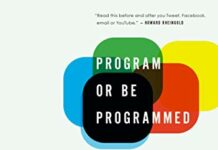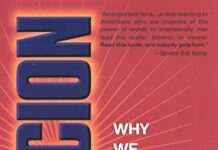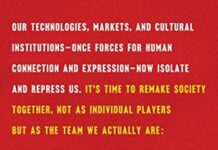
Ebook Info
- Published: 2009
- Number of pages: 304 pages
- Format: PDF
- File Size: 1.78 MB
- Authors: Douglas Rushkoff
Description
Now includes “The Life Inc. Guide to Reclaiming the Value You Create”In Life Inc, award-winning writer Douglas Rushkoff traces how corporations went from being convenient legal fictions to being the dominant fact of contemporary life. The resulting ideology, corporatism, has infiltrated all aspects of civics, commerce, and culture—from the founding of the first chartered monopoly to the branding of the self, from the invention of central currency to the privatization of banking, from the Victorian Great Exhibition to the solipsism of Facebook. Life Inc explains why we see our homes as investments rather than places to live, our 401(k) plans as the ultimate measure of success, and the Internet as just another place to do business. Most important, Rushkoff illuminates both how we’ve become disconnected from our world and how we can reconnect to our towns, to the value we can create, and, mostly, to one another. As the speculative economy collapses under its own weight, Life Inc shows us how to build a real and human-scaled society to take its place.
User’s Reviews
Reviews from Amazon users which were colected at the time this book was published on the website:
⭐The book starts with a telling anecdote: the author, Douglas Rushkoff got mugged on Christmas Eve in from of his Brooklyn apartment, and instead of getting sympathy, he was basically urged to shut up by local residents, afraid as they were that the incident would damage the reputation of their neighborhood, i.e. reduce the value of their home. “When faced with a local mugging, the community of Park Slope first thought to protect its brand instead of its people,” Rushkoff writes. The anecdote is Rushkoff’s starting point to analyze how, since the Renaissance, “the market and its logic have insinuated themselves into every area of our lives.” He argues that they mediate every single aspect of our existence, disconnecting us from everything that surrounds us. The book is quite expectedly somewhat controversial — yet may also be one of the most inspiring recent books for entrepreneurs and innovative marketers.Chapter after chapter, the author recounts how charters disconnected us from commerce, how by mistaking the map for the territory, we got disconnected from place, how the real estate business disconnected us from home, public relations from one another, consumer empowerment from choice, a unified financial architecture from the meaning of currency, big business from the creation of value – and how many of our attempts to combat corporate power are likely to disconnect us even more. “Brands were invented to substitute for the real connections we had to people, places and values.”The system that we have created for ourselves through a “six-hundred-year-old-business-deal” is a “progress” that translates into a loss. The book reads like an inexorable dispossession of connectedness to people and our environment, and like a sobering appendix to the five ages of man that Hesiod outlined in Works and Days in 700 BC. From one tectonic shift to the other, we have landed ourselves in the Age of Simulacra: “Step by step, place became property, property became a mortgage, and mortgages became derivative instruments;” we depend on brands and ad-agencies for our self-presentation and identity; our “positive thinking” and self-confidence result from intense packaging efforts and “corporate-enabled self-improvement.” We can buy Disneyland souvenirs in any shopping mall without ever having been to LA. Spiritual centers, from Esalen to the Omega Institute, are well-oiled businesses, and our speculative economy has deprived us from the ability to perceive the value we create or to even create value. Even the buzz and word-of-mouth is now mediated: “In Apple’s earlier days, Macintosh enthusiasts could be counted on to go into CompUSA stores when new products were released and demonstrate their benefits to consumers. But today’s brand enthusiasts are paid spokespeople, faking their loyalty for money. It’s big economy. New firms such as Buzz Marketing and industry groups like WOMMA, the Word of Mouth Marketing Association now conduct word-of-mouth campaigns on a scale unimaginable before.” So much for our friendly social sites!The book is phenomenally well documented and provides fantastic insights into some of the roots of the current financial debacle. The way the story is recounted is fascinating — even if you may have questions about the angle taken by Rushkoff. One can argue that while it may be true that local trade using local currencies did foster more interactions between people and a thriving economy between the eleventh and thirteenth century, and that “real people did the best when prosperity was a bottom-up approach,” the idea that the corporatist economy initiated by the Renaissance also initiated a downward spiral that all subsequent innovations only enhanced feels somewhat simplistic at times — along with the assumption that mankind has somehow strayed from a better stage to a worse one. In the end, the evaluation of what connected/disconnectedness may depend on the frame of reference. Plato/Socrates fought the Sophists’s ability to brand anything as a result of their disconnectedness from the essential, the realm of Forms and Ideas.The book is also an insightful approach to the history of the United States, full of interesting reminders. Mirroring the techniques of the railroad barons of the century before, GM crafted the legislation that made highways federally funded and controlled – and idealized suburbs. Yes, Teddy Roosevelt, fighting corporations, may have been more progressive than FDR when the latter endorsed the Home Owners Loan Corporation (HOLC) that changed the perception of mortgages (from a stigma to a plus), but ended up empowering appraisers as they assessed the quality of neighborhoods (and this to the detriment of Jews and blacks). The magic of PRs in the country has a unique ability to reframe or gloss over history. PR artists such as George Creel and Edward Bernays enabled Woodrow Wilson, who had run for reelection in 1916 on the platform that “he kept us out of the war,” to persuade everybody “to make the world safe for democracy” a year later. In the same fashion, it’s stunning how fast we forgot that IBM sold punch-card tabulators to the Nazis, that GE partnered with Krupp (a German munition firm) and that GM and Ford, which already controlled 70 percent of the German automobile market, retooled their factories to supply Nazis with war vehicles. As I say that, I can only suggest that you read a few foundational books in the history of marketing persuasion (of which many currently successful marketing books are spin derivatives), mentioned by Rushkoff, especially Edward Bernays’s Crystallizing Public Opinion, Public Relations or Propaganda. While at it, also read Larry Tye’s book, The Father of Spin: Edward L. Bernays and The Birth of Public Relations. Also consider another classic: Vance Packard’s The Hidden Persuaders or The Status Seekers. Also, Douglas Rushkoff has written several other interesting books. One of them,MEDIA VIRUS – Hidden Agendas in Popular Culture, is the origin of the expression “viral marketing.”The last chapter of the book, “Here and Now,” subtitled “The Opportunity to Reconnect,” is in fact better than any marketing book, and may give you great ideas of companies that can make a difference. As the author reminds us in the previous chapter, PayPal’s original plan was to offer an alternative payment service. True, the business model changed as Paypal activity was perceived as a violation of the banking laws. But you may have other ideas… and it’s when they read scouring, abrasive books that entrepreneurs invent new rules — and eventually might pave the way towards a new economy, or creatively revisit Adam Smith’s The Wealth of Nations. “Like the founders of America, who may have differed on almost everything else but this,” notes Rushkoff, “Smith saw economics as characterized by small, scaled, local economies working in interaction with one another.”
⭐Although it falls short of fulfilling its title, it remains a highly informative, well-researched book. Recommended reading for everyone interested in the full depth of corporate culture and looking for alternatives.I was attracted to the book by a radio interview by Rushkoff, in which he mentioned local currency, and its use in history as far back as the Middle Ages, particularly during the Age of Cathedrals… I bought the book primarily to follow this lead, as local currency is a particular interest of mine, and was pleased to see that Rushkoff strongly supports the use of local currency as part of the solution to our delima. I veiw local currency as the ONLY card we have to play that is powerful enough to turn the tide. After all, its the golden rule: whoever has the gold, makes the rules. With local currency, we can make our own rules and break the cycle, and we have a chance to change the big picture. Without it, we’re just greenies growing gardens and shaking our fists at The Man, but we’re still trapped playing the game by their rules, and the banks, corporations, and marketers will go on vaccuming the world of natural resources and exploiting our every move.I thought the book’s best point is in detailing and documenting the current state of affairs regarding the negative impact of corporatism. Rushkoff does not flinch from revealing the terrible negative impact of corporatism on our society. Second best, is coverage of the deep history of corporations back to the Renaissance, and particularly the surprisingly good conditions of life in the Middle Ages. Inaccurately called the “Dark Ages”, and which numerous authoritative sources have begun to call the Not-So-Dark-Ages, or the High Middle Ages, refering to the fact that there was a much higher degree of innovation and far less repressive social structure, and even abundant wealth than we’re typically lead to believe. Certainly there was serfdom and fuedalism, but it was not nearly as bad as the crushing absolute slavery that occured in later centuries, nor the blatant dehumanizing exploitation of the labor classes during the industrial age, nor the intricate debt-traps that banks have mastered in recent decades. All brought to us courtesy of corporations. Compared to that, fuedalism seems pretty mild. The High Middle Ages is a period well worth studying for anyone interested in sustainability, self-sufficiency, local currencies, and community cooperative ventures.The book’s only weak point is that it spends the majority of its time focused on explianing the problem. We know there’s a problem, enough already! We want to hear the “how to take it back” part. The author’s proposed solutions are barely mentioned until the final chapter, a mere 25 pages, with little detail. Given the title, I was hoping for more. Also, the legal status of Corporate Personhood, which lies at the heart of corporatism, is not mentioned even once, nor is the role of debt and usury (and the history of bans on usury) covered. All these relate strongly to the issue of corporatism.I still recommend the book, and Im glad I bought it and enjoyed reading it…even though Im already well-versed on the topic, there’s lots of interesting new information. The work is completely referenced, which makes it a good source of leads to follow.
⭐It’s a must read book for any critical thinker who is concerned about the Future. A lot of history references yet it is not boring, on the contrary – it’s fascinating to observe the author’s work uncovering trends and developments crossing the continents and lasting dozens and hundreds of years. Author offers his analysis as well as solutions which can be applied on any level. Author manages to stay on a constructive and positive path which is no easy task considering that the topic affects everybody directly. I learned a ton. Looking forward to read other Douglas’ books.. and reread this one again.
⭐Excellent history of corporate capitalism…very sad that our society encourages this even though so very few reap the benefits.
⭐Un livre qui est bien écrit et intéressant à lire même si ça traite souvent des concepts économiques. Terrifiant car le constat de ce qui se passe dans le monde et surtout dans les grandes entreprises fait peur. Je conseille ce livre à toute personne désenchantée qui travaille dans une grande entreprise ou qui se demande parfois dans quel monde on vit…Quelques passages sont un peu idéalistes et les ‘solutions’ ne sont pas toujours évidentes mais ça donne vraiment à réfléchir quand même. A noter que le livre est en anglais et il faut avoir un niveau assez élevé pour suivre. Autre chose à noter est la police du texte – assez petite et pas la plus facile à lire.Alors, ce livre est fait pour vous.Je recommande haut et fort ce livre parce qu’il résume le processus qui a amené les entreprises à avoir plus de poids que les êtres humains et qui a poussé les êtres humains à penser comme voire à devenir des entreprises pour leur propre réussite.L’auteur illustre au travers de nombreux exemples et dates historiques la DECONNEXION de l’homme face à 7 éléments: le commerce, le lieu, la maison, les autres personnes, le choix, la monnaie et la valeur.Mais ce qui rend ce livre bien plus intéressant, c’est qu’il n’appelle pas à contrecarrer les entreprises ouvertement via des pratiques anarchistes.Il exulte le retour à des valeurs humaines au niveau microéconomique de chaque individu et communauté.Sa solution n’est pas de faire du “social business” mais bien de se détacher de la gouvernance du dollar et des banques en ré-instituant à leur juste valeur l’entraide, le troc et même la pratique d’une monnaie locale qui fluidifierait les liquidités au quotidien et qui ramènerait la monnaie nationale à des transactions plus importantes et à l’épargne, comme cela était le cas au Moyen-Age.Vous lisez Stiglitz mais pourquoi pas Rushkoff? Ce livre a du mérite.Life Inc. est un livre à l’ambition simple. Nous expliquer comment et pourquoi les corporations ont changées non seulement le monde mais aussi notre façon de nous comporter les un envers les autres.L’historique depuis la renaissance est passionnant à lire. L’auteur est passé dans le Colbert Report, un “late show” parodique américain ou il m’a fait grande impression ce qui a motivé mon achat. Si vous avez l’occasion vous pouvez trouver sous you tube, Life Inc le film qui est une petite promo dans laquel il vulgarise les idées du livre. Cela peu peut être vous donner envi de lire cet essai sur les corporations et sur notre monde et comment le changer.
⭐
Keywords
Free Download Life Inc.: How the World Became a Corporation and How to Take It Back in PDF format
Life Inc.: How the World Became a Corporation and How to Take It Back PDF Free Download
Download Life Inc.: How the World Became a Corporation and How to Take It Back 2009 PDF Free
Life Inc.: How the World Became a Corporation and How to Take It Back 2009 PDF Free Download
Download Life Inc.: How the World Became a Corporation and How to Take It Back PDF
Free Download Ebook Life Inc.: How the World Became a Corporation and How to Take It Back




